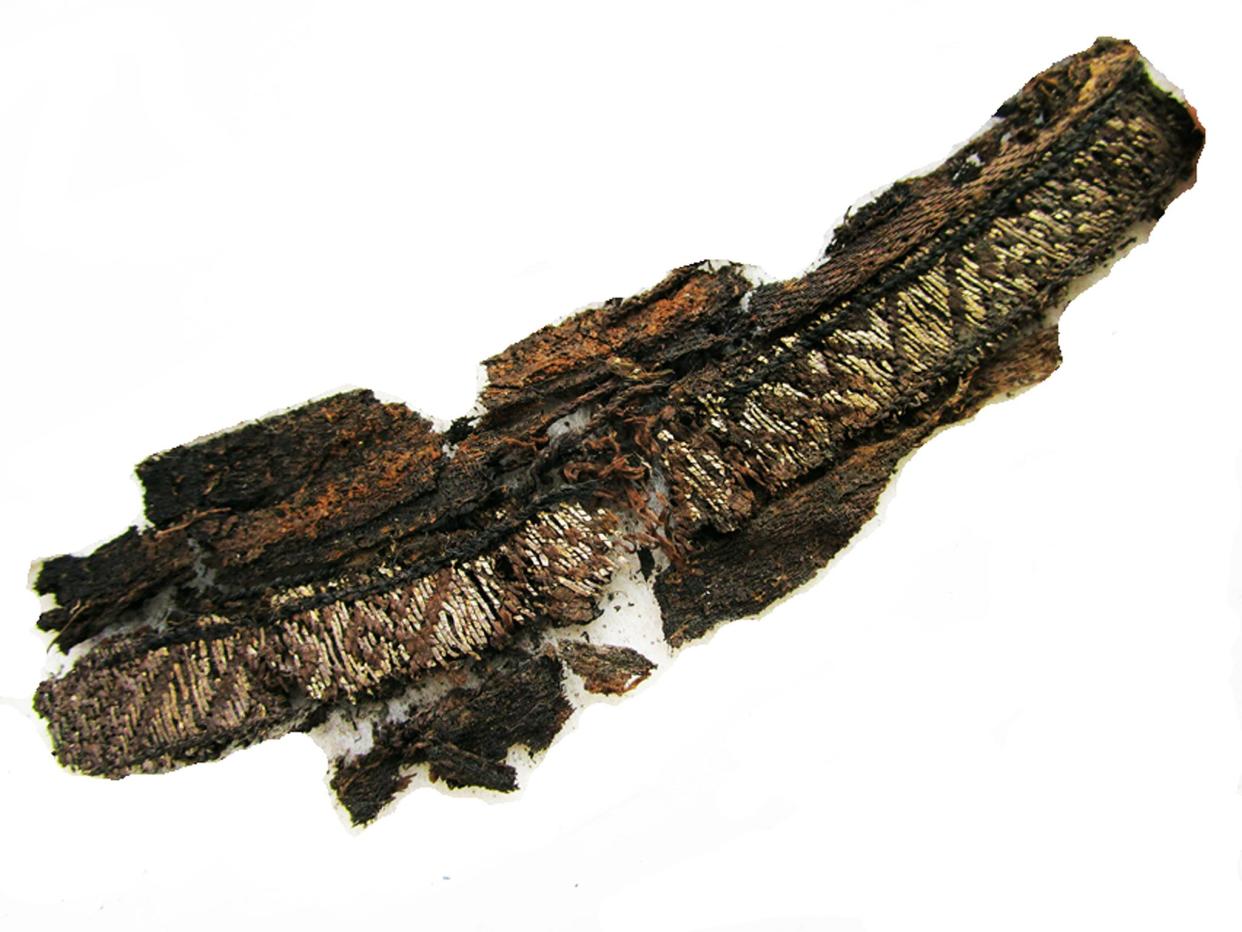Viking textile did not feature word 'Allah', expert says

An expert has disputed claims that Allah's name was embroidered into ancient Viking burial clothes - a discovery hailed as "staggering" when Swedish researchers announced their findings last week.
After reexamining the cloth, archaeologist Annika Larsson of Uppsala University claimed the silk patterns which were originally thought to be ordinary Viking Age decoration, showed a geometric Kufic script.
The patterns were found on woven bands as well as items of clothing in two separate grave sites, prompting the suggestion that Viking funeral customs had been influenced by Islam.
Media around the world including The Independent reported on the finding, but now a leading expert in mediaeval Islamic art and archaeology has disputed the claim and said the inscription contains "no Arabic at all."
Stephennie Mulder, a professor from the University of Texas in Austin, said the error stems from a "serious problem of dating".
She claims Kufic script did not occur until 500 years after the Viking age.
"It’s a style called square Kufic, and it’s common in Iran, C. Asia on architecture after 15th century," she wrote on Twitter.
Dear Entire World: #Viking ‘Allah’ textile actually doesn't have Allah on it. Vikings had rich contacts w/Arab world. This textile? No. 1/60 pic.twitter.com/jpvbrrePQg
— Stephennie Mulder (@stephenniem) October 16, 2017
She said even if Kufic script did exist, the inscription embroidered into the textile still does not mean anything in Arabic.
"Let’s assume there are 10th century Central Asian textiles with square Kufic. Even so, it turns out Larsson’s drawing doesn’t say ‘Allah'," she wrote.
"Instead the drawing says للله ‘lllah’, which basically makes no sense in Arabic.
"Arabic phrases like الحَمْد لله al-hamdulillah incorporate 'l-lah' but don’t stand alone, and it’s spelled لله with two uprights, not three."
Finally, Prof Mulder claims the evidence of Islamic influence presented by Ms Larsson is based on "conjecture" and "supposition" rather than "proof".
"The tablet-woven textile in the widely-dispersed press photograph shows only design of three uprights connected by a horizontal band," she wrote.
The tablet-woven textile in the widely-dispersed press photograph shows only design of three uprights connected by a horizontal band. 30/60 pic.twitter.com/NUOiLR6zbZ
— Stephennie Mulder (@stephenniem) October 16, 2017
"But reconstruction drawing by textile archaeologist Annika Larsson shows extensions on either side that include a ha.
But reconstruction drawing by @UU_University textile archaeologist Annika Larsson shows extensions on either side that include a ha. 32/60 pic.twitter.com/1NyQzcqDV2
— Stephennie Mulder (@stephenniem) October 16, 2017
"These extensions practically double width of band. Not mentioned in press accounts: Larsson’s extensions are entirely conjectural."
Responding to the dispute, Ms Larsson told The Independent: "These finds are with no doubt from the Viking Age. They are found in several of the Birka graves and Viking Age boatgraves north of Gamla Uppsala. The geometrical Kufi is also to be found in similar textile ribbons from Spain.
"Even if the characters should be interpereted as “Illah” it is still Kufic, and as I have understood from the arabic experts it still refers to 'Allah'."

 Yahoo News
Yahoo News 
